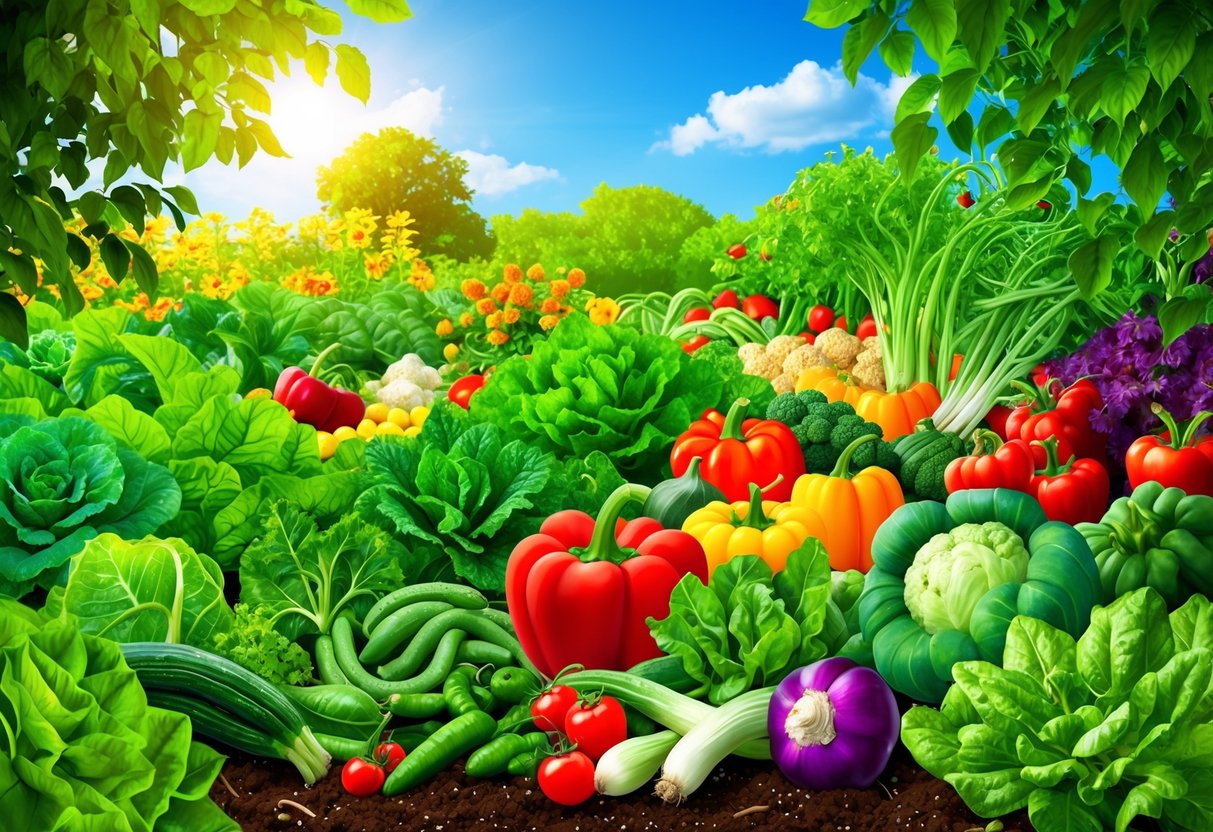
Soil Preparation and Organic Amendments
Healthy, nutrient-rich soil is the foundation for growing gourmet vegetables with robust flavors and organic quality.
Using balanced soil amendments, consistent moisture, and proper structure helps vegetables achieve the best possible growth and taste.
Building Fertile Soil for Gourmet Vegetables
Gourmet vegetables thrive in loose, fertile soil with an abundance of organic matter and essential nutrients.
Amending the soil with a mix of animal, mineral, and plant-based inputs, such as kelp meal, alfalfa, or ocean salt, can provide an extra nutritional boost for demanding vegetables.
A pH level between 6.0 and 7.0 suits most vegetables, while sandy or clay-heavy soils benefit from extra organic matter.
Mixing in a 3- to 4-inch layer of organic material helps improve drainage, texture, and nutrient retention.
For additional details on creating nutrient-rich soil, visit this guide to organic amendments.
Using Compost and Aged Manure
Compost and aged manure are essential for enriching soil without relying on synthetic fertilizers.
Well-rotted manure adds slow-release nitrogen, while finished compost boosts soil structure and microbial activity for healthier roots.
- Compost: Increases water retention, improves aeration, and provides a slow, steady supply of nutrients.
- Aged manure: Supplies organic nitrogen and trace minerals for lush, green growth.
Apply 2–3 inches of compost or manure before planting and work it into the upper 6–12 inches of soil.
For new gardens, incorporate these organic matter sources deeply by digging down at least one foot, ensuring even nutrient distribution.
More on using compost and manure for vegetables can be found in this step-by-step preparation resource.
Managing Soil Moisture and Structure
Gourmet vegetables grow best in consistently moist, well-structured soil.
Heavy clay or very sandy soil benefits from organic amendments like coconut coir or leaf mulch, which retain moisture and promote air exchange.
To prevent compaction and optimize root growth, avoid working soil when it’s wet and incorporate coarse organic materials.
A thick mulch layer regulates moisture, suppresses weeds, and reduces temperature fluctuations.
Ideal soil texture holds together when pressed but crumbles easily, allowing roots to move freely and absorb nutrients.
Well-managed moisture and structure protect vegetables from drought stress and create an environment conducive to strong, flavorful harvests.
Find advice on soil moisture and improvement strategies in this vegetable gardening article.
Sowing and Growing Gourmet Lettuce and Salad Greens
Gourmet lettuce and specialty salad greens thrive with the right sowing method, thoughtful variety selection, and proper temperature management.
Choices made early in the growing process can impact yield, flavor, and the likelihood of bolting.
Direct Sowing vs. Transplanting Seedlings
Direct sowing lettuce seeds into prepared soil allows for dense planting and promotes rapid germination, especially in early spring or fall.
This method is well-suited for cool climates and enables gardeners to harvest baby greens quickly.
Lightly broadcast seeds over compost-enriched beds, then cover with a thin layer of soil for best results.
In contrast, transplanting lettuce seedlings provides a head start when seasons are short or temperatures fluctuate.
Transplants are ideal for establishing gourmet lettuce varieties before harsh weather begins.
Seedlings can be started indoors under lights or in a greenhouse, then moved outdoors once true leaves appear and soil temperatures are consistently above 45°F.
Both methods benefit from regular moisture and fertile, loose soil.
For more on rapid growth and arrangement strategies for lettuce, visit this guide on growing organic lettuce.
Cultivating Gourmet Salad Mixes
Creating a gourmet salad mix involves growing a blend of lettuce, mustard, arugula, and specialty greens like mizuna or tatsoi.
These greens can be sown thickly together to maximize harvests and encourage a variety of colors, shapes, and tastes.
Key tips for salad mix success:
- Choose heat-tolerant and slow-bolting cultivars for longer picking windows.
- Succession sow every 2-3 weeks to maintain continuous harvests.
- Use raised beds or wide containers, allowing at least 4-6 inches between rows for airflow.
Regular harvesting by cutting an inch above the soil encourages regrowth and keeps mixes tender.
For a comprehensive overview on growing gourmet salad greens at home, consider these practical guidelines.
Preventing Bolting in Leafy Greens
Bolting occurs when lettuce plants and other leafy greens shift from leaf production to flowering, usually triggered by heat or day length. This causes flavors to turn bitter and textures to toughen, reducing salad garden quality.
To minimize bolting, select slow-bolting lettuce and mustard green varieties. Provide afternoon shade or use shade cloth during hot periods.
Water consistently and mulch beds to keep soil temperatures cool. Harvest frequently, especially before heat waves, and remove any plants that show central stem elongation.
Monitor weather forecasts and adapt planting schedules to cooler months when possible. For more temperature and timing tips, see this ultimate guide to salad greens.